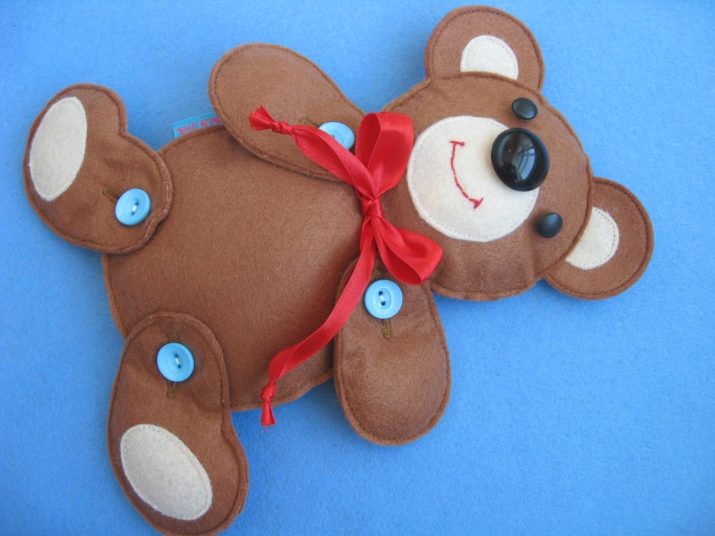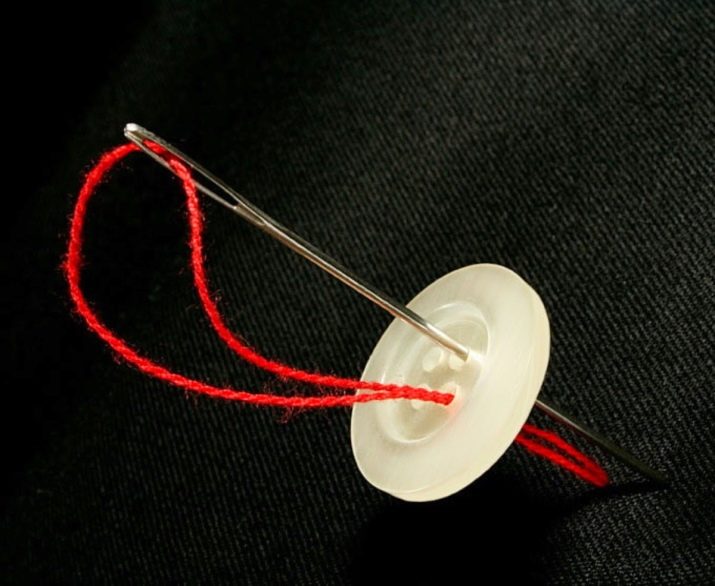The best learned minds of Germany in the 13th century could not have imagined that the functional and useful buttons that they presented to humanity could be perceived by some as a creature of horror. Kumpunophobia is a panicky fear of buttons. It is a rather rare phobia; according to some reports, it occurs in one case for 75 thousand people. And to everyone around, such fear seems ridiculous, except for kumpunophobe.

Description
Kumpunophobia is a mental disorder that is accompanied by a pathological fear of buttons. Most people have not even heard of such a disease, and it may seem funny to them. Believe me, there is nothing funny in this mental violation. In any case, for the person most affected by the disease.
The International Classification of Diseases (ICD-10 version) includes kumpunophobia in the list of phobic disorders under the code F-40. This means that people who are afraid of buttons need professional medical help, since their rare and unusual disorder can significantly reduce the quality of life and cause concomitant mental disorders. Its frustration got its name from the Latin koumpouno - “button”.
Sometimes the fear of these objects is caused not by specifically negative expectations of danger from them, but by another phobia - tripophobia (fear of cluster holes, multiple round holes).
Whatever it was, the fact remains that there are people who are afraid of buttons, try not to wear clothes with such accessories, carefully avoid contacts with other people who have large, noticeable buttons on their clothes. There are many ways to express this fear.
Other people live in the world - phylobutonists. These are button collectors who know nothing about this accessory. And it’s very good that kumpunophobia and phylobutonistics are quite rare, otherwise it is hard to imagine what sad consequences could result in sudden meetings of kumpunophobia with owners of rich button collections.


What could be scary in a regular button? Kumpunofob knows exactly the answer to this question. These objects seem disgusting to the patient, their appearance is unpleasant, they are unpleasant to the touch. The more buttons, the greater the anxiety and unconscious expectation of danger.
Kumpunofoby understand that their fear is irrational, it is difficult to explain logically. But in a state of horror in a collision with buttons, finding themselves in a dangerous situation for themselves, people with such a phobia simply lose the ability to control their actions, reactions, and the situation around them. Severe forms of phobia can be manifested by attacks of panic attacks.
To live in peace, phobes try to organize their life, excluding from it possible situations in which fear arises. Of course, you can buy and wear only clothes with zippers, without buttons. But how to ride in transport, visit shops, communicate with people at work, if every first person has objects that cause a wide range of emotions - from excitement to panic?
Therefore, we can safely say that This phobia is a danger to human health and life, because it causes him to limit his daily life, to feel excitement and anxiety, to reduce social contacts and visits to public places.

Causes
The causes of this disorder have not been studied well enough, because the phobia itself was recognized as a mental disorder only recently, and its relatively low prevalence does not allow us to collect maximum information about the violation. But there are several factors that theoretically can cause fear of buttons.
Negative childhood experience
Children often pull various trifles in their mouths and many swallow buttons. If the button is small and leaves the body naturally, there is no reason to worry. But sometimes children swallow and inhale the buttons are quite large. In the subconscious, the fear of parents and the unpleasant sensations associated with subsequent medical manipulations to remove the swallowed button can remain for life.
Children's experience can also be associated with punishment for buttons scattered or taken without demand, buttons cut off by an inquisitive kid from his mother’s dress coat, etc. If the punishment was significant, it is possible that the image of the buttons in the subconscious will forever be closely related to the subsequent expectation of pain, punishment, danger.
The experience is not always traumatic and not always its own. The child could have toys with buttons sewn instead of the eyes; during a period of illness or a bad mood, he could see a cartoon about Caroline in the Land of Nightmares, where all the characters had buttons instead of eyes.
The child could be scared by anything, for example, a rushing dog, but it was precisely the large buttons on the coat of the owner of the aggressive dog that could remember the scared child.

Quite often, it is very difficult for a person to recall exactly what event caused the formation of a negative attitude to buttons in childhood. The very traumatic psyche event can be erased from memory, but the mechanism launched by it can not.
Embarrassing situations from the past
People can fall into awkward situations associated with buttons, and if a person is impressionable, vulnerable, attaches great importance to the opinion of others, he may well experience the strongest emotions that will initiate kumpunophobia. For example, the button on the fly of a teenager came off at the wrong time - in the lesson, when he answered at the blackboard, during a public speech, in front of a girl who really likes it.
Sometimes a person cannot cope with a button — fasten or unfasten in some important situation. This causes excitement, the hands begin to tremble and the button to unfasten becomes even more difficult. This happens in young people during their first sexual contact, and then the elements of kumpunophobia can arise along with some intimate phobias and obsessive thoughts, which can complicate a person’s adult sex life.
A person who can’t sew a button in any way can also become the object of ridicule from others, while he may experience a great fear of losing authority, respect, and the image of a hated button will be closely connected with a feeling of panic.

Concomitant Mental Disorders
Often, kumpunophobia does not act as an independent disease, but as a symptom of other mental problems. Button fear occurs in schizophrenia, delusional disorders, compulsive disorders, paranoia. In this case, a strange attitude to popular fasteners and decorative buttons is far from the most important “oddity”. A person can be convinced that the buttons are poisoned, inhabited by microbes, dirty, he will avoid touching them not only on his clothes.
If another person accidentally touches a button in a transport button, he can throw his jacket directly into the ballot box near the metro, because going further after touching someone else's button will be unbearable.

Heredity
No specific gene has been identified that could ensure the transmission of phobias by inheritance, but the educational factor does exist. If parents are afraid and avoid something panicky, the child’s brain perceives this as a threat, and therefore a child with the same mental disorder may well grow up with a kumpunophobic parent.

Symptoms and signs
The fear of buttons can be different: some are afraid of the appearance of large buttons, others - only of small ones. The sound of falling buttons, falling out buttons seems terrifying to some, and the prospect of button action — fastening or unfastening, sewing — is horrifying to others. Some are afraid of only wooden products, others are afraid of plastic or metal accessories. In rare cases, a person may be afraid of all of the listed objects, as well as images, pictures, drawings in which buttons are depicted.
Since buttons are extremely widespread on people's clothing, kumpunofoby try to avoid being in crowded places - in the crowd, in transport at rush hour, at public events. A sudden collision with a frightening situation can cause vegetative signs: a fright generates an adrenaline rush that expands the pupils, causes blood to rush to the muscles, changes in heartbeat, and blood pressure surges can occur.
Kumpunofob may experience an attack of nausea, his legs and arms are shaking, nausea, vomiting, and loss of consciousness are possible. Experts note that very often kumpunophobia is accompanied by increased disgust, and therefore a person may feel an irresistible desire to wash after a panic attack and even wash all his clothes.
Over time, undetected and untreated phobia is exacerbated.

Therapy
It is quite difficult to cope with this phobia on your own. It is necessary to consult a specialist - a psychiatrist or psychotherapist. The most effective method of overcoming such phobias today is considered psychotherapy.
As part of the treatment using hypnosis, experts identify the true causes of a strange fear, help a person reconsider those distant events and beliefs, and break the familiar connection between an object (button) and the occurrence of fear.
Gradually, the patient begins to gradually sink into an environment that previously caused him panic - he will sew and unfasten buttons, carry things with them.If kumpunophobia is accompanied by high anxiety, may be recommended. antidepressant drugs. One should not expect results from drugs without psychotherapy - relief will be temporary and not long-term.












